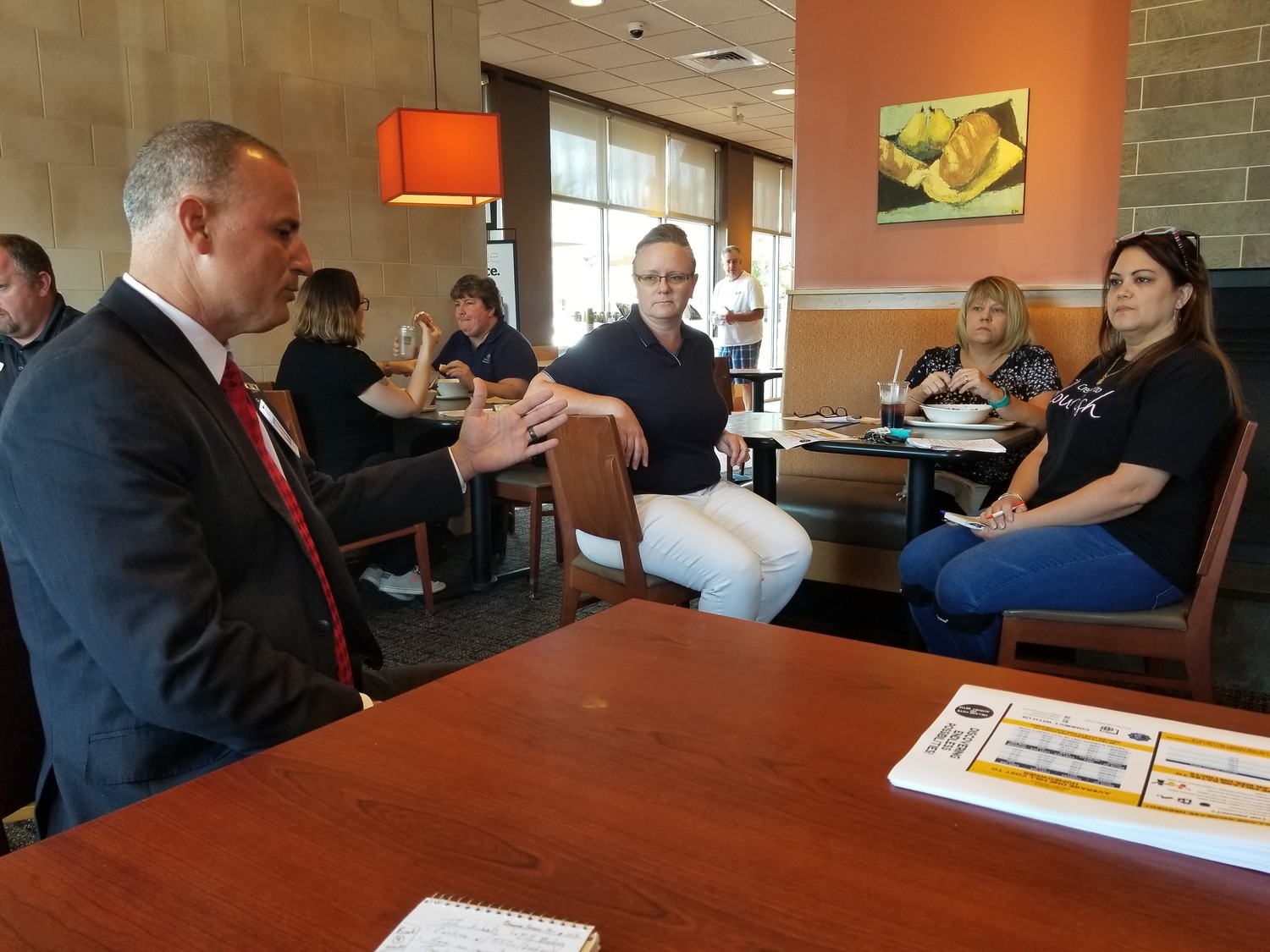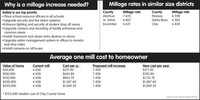Community asks questions about one-mill proposal
OAKLEAF – Clay County Superintendent Addison Davis is making his way through each part of the county in an effort to answer questions voters might have regarding an upcoming question on the ballot …
This item is available in full to subscribers.
Attention subscribers
To continue reading, you will need to either log in to your subscriber account, or purchase a new subscription.
If you are a current print subscriber, you can set up a free website account and connect your subscription to it by clicking here.
If you are a digital subscriber with an active, online-only subscription then you already have an account here. Just reset your password if you've not yet logged in to your account on this new site.
Otherwise, click here to view your options for subscribing.
Please log in to continueDon't have an ID?Print subscribersIf you're a print subscriber, but do not yet have an online account, click here to create one. Non-subscribersClick here to see your options for subscribing. Single day passYou also have the option of purchasing 24 hours of access, for $1.00. Click here to purchase a single day pass. |
Community asks questions about one-mill proposal
OAKLEAF – Clay County Superintendent Addison Davis is making his way through each part of the county in an effort to answer questions voters might have regarding an upcoming question on the ballot that, if passed, would see the county’s millage increased by one mill.
Earlier this year, the school board voted to include a question on the ballot asking voters to approve a one mill increase earmarked for school safety and other operating expenses. This vote was passed 3-2, with board members Ashley Gilhousen and Betsy Condon voting no as stating wanted the “and other operating expenses” slashed from the referendum. They also said that instead of one mill increase, they preferred a half mill increase.
“I can’t tell you how to vote, one way or the other, but I can get out front and give you all the facts you need before heading to the polls,” Davis said Aug. 16 at the Oakleaf Panera, the second of five community meetings that began on Aug. 15.
Attendance at the first stop, which occurred on Aug. 15 at Urban Bean Coffeehouse Café in Orange Park, saw only a handful of people showing up. The Oakleaf stop only saw a few people attend, but that didn’t stop Davis from answering every question.
Clay County currently ranks fifty-fifth out of 67 in the county for millage rates. It sits today at 6.438. This millage rate sees the average Clay County homeowner paying $965.70 per year. An additional mill would bring the millage rate to 7.438 and push the average Clay County homeowner’s tax bill to an estimated $1,115.70, or an increase of $150 for the year. This new rate would bring in an estimated $10.5 million to the school district.
The funds would be used to fund School Resource Officers at each district school, including elementary schools, which began the year with trained civilians and not SROs.
“If [the millage increase] fails, we will continue utilizing guardians like we are today,” Davis said. “And that’s not a bad thing. These guardians were rigorously trained and have the care to do what needs to be done to protect our children.”
While the ultimate goal is to have an SRO in every school, Davis is confident in the abilities of the county’s guardians, who together have over 500 hours of security and safety experience with backgrounds in police work, private security, military, firefighting and EMT services. On top of that, each guardian endured 140 hours of rigorous training that included practice on a gun range, psychological evaluations and more.
However, if the millage increase fails, the consequences could be dire for some. According to Davis, to continue to provide the level of security students in Clay County are receiving today, the district might have to reallocate money from other programs and possibly result in a loss of staff.
“If we went into our piggy bank and cut the $5.6 million out that we need to fund the SROs, then we’d be cutting back programs, content, support for schools, teaching positions and support positions,” Davis said. “The bulk of our funding is directly linked to personnel.”
While a half mill increase fits the desire of some voters, Davis said that a half mill increase would only bring in an estimated $5 million, and therefore, wouldn’t cover all SROs and future expected rising costs of personnel.
Davis said the remainder of funds from the one mill would go to further harden the schools to ensure safety for children. This would include upgraded security and fire alarm systems, enhanced lighting and security at student drop-off areas, upgraded camera and recording at facility entrances and common areas. The ultimate goal is to have a camera system that would allow police to view video feeds at any time, enhance classroom lockdown entry devices, upgrade visitor management systems in offices and install cameras on every school bus.
“All of these things work together to enhance the security of our schools and the safety of our students,” Davis said. “Without the mill, some of these things might not be able to happen. The funding simply isn’t there.”
To put the lack of funding into perspective, for each student in Clay County, the school district receives about 14 cents per child in funds earmarked for capital projects. This equates to roughly $17,000 each year for students.
“I can’t even buy every student a happy meal with $17,000,” Davis said.
One of the attendees, Connie Swanson, was already in favor of the millage increase but she needed some answers before saying her final yes at the polls. Her biggest question revolved around line-item checks to ensure that citizens know exactly what the money brought in is being spent on and a way for voters to keep the school board in check.
“I just want to be able to make sure that our money isn’t being spent to give someone double the salary,” Swanson said.
Davis said if the mill passes, the district will publish a report detailing exactly where the money went.
“My direction as superintendent is to make certain that if voters pass the millage, we give an annual report of how that money is expended so that the community can determine their return on investment,” Davis said. “This is a four-year commitment and it doesn’t roll over automatically. After a full-year trial, the community will be able to see how every cent and every dollar is spent so they can determine how [their millage increase] really impacted the school district.”
With her concerns answered, Swanson said she was ready to vote yes to the increase, as long as she gets a line-item report verifying every single purchase the school board makes with her tax dollars.
“I know for others, $150 might be a lot more but for me, it’s something I’m willing to pay if it means our kids are safe,” Swanson said. “If I go out to eat with my family at Chik-fil-A, it’s 40 bucks. So, for me, can I do a few less $40 Chik-fil-A meals to help fund the school district? Yes, but at the same time, I don’t want to fund somebody’s mismanagement, so I’d like to make sure it is spent and allocated appropriately.”











